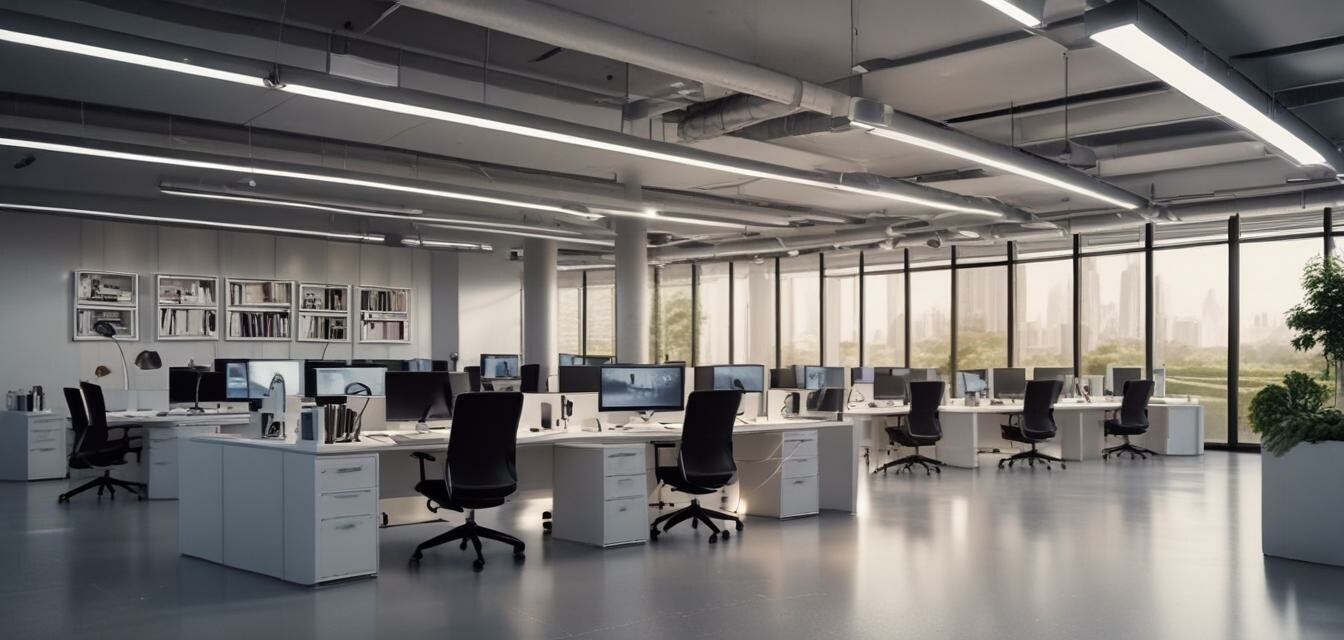
How Smart Technology is Changing Office Layouts
- Smart technology boosts productivity by enhancing office layouts.
- Automated tools streamline workflow and processes, making spaces more efficient.
- Flexibility in design is a major trend, allowing for adaptable work environments.
- Smart lighting and environmental controls contribute to employee satisfaction.
- Investing in smart office solutions can lead to long-term cost savings.
As businesses continue to evolve in our fast-paced, technology-driven world, the design and layout of office spaces are undergoing significant transformations. Smart technology is leading the charge, influencing everything from how teams collaborate to how employees engage with their environment. This article investigates how innovative smart solutions are reshaping office layouts, driving productivity, and creating a more efficient workspace.
1. The Rise of Smart Technology in Offices
Smart technology encompasses tools and systems that automate tasks and facilitate better communication and collaboration between employees. From voice-activated devices to automated office tools, these innovations are not just trends; they’re fundamentally changing how we organize our work environments. The adoption of smart technology is making previously rigid office layouts much more versatile and adaptable to changing work styles.
2. Key Features of Smart Office Layouts
| Feature | Description |
|---|---|
| Flexible Workspaces | Areas that can be reconfigured for collaboration or focused work, adapting to team needs. |
| Automated Tools | Devices that automate tasks such as scheduling and resource management to improve efficiency. |
| Smart Lighting | Lighting systems that adjust based on natural light or occupancy, promoting a healthier work environment. |
| Wireless Charging | Charging stations eliminate tangled cords and allow for convenient device charging. |
| Environmental Controls | Systems that monitor and adjust temperature and air quality for optimal comfort. |
3. Flexible Office Design Trends
Today, flexibility is paramount in office design. Not only does it cater to different work styles, but it also maximizes the use of space. Here are some notable trends:
- Hot Desking: Employees choose where to sit, reducing the need for dedicated desks.
- Open Collaboration Areas: Zones designed for informal meetings or brainstorming sessions.
- Quiet Zones: Areas for focused work, away from the hustle and bustle of the office.
- Breakout Spaces: Casual areas for relaxation and informal discussions.
4. How Smart Technology Enhances Productivity
Integrating smart technology into office design can result in significant productivity boosts. Below are some ways smart solutions help:
- Time Management: Automated scheduling tools keep teams aligned and on track.
- Improved Communication: Collaborative tech tools facilitate easier conversation and idea-sharing.
- Resource Efficiency: Smart solutions reduce waste and energy consumption through effective monitoring.
- Remote Control: Control over office environment settings allows employees to personalize their space.
5. Case Studies: Companies Leading the Way
Many companies are at the forefront of integrating smart technology into their office layouts. Here are a few examples of how they have done it:
| Company | Smart Technology Implemented | Outcome |
|---|---|---|
| TechCorp | Voice-activated devices | Improved employee engagement and faster response times. |
| Design Innovations | Automated lighting systems | Enhanced comfort and concentration levels among staff. |
| Finance Solutions | Smart temperature controls | Reduced energy costs and increased employee satisfaction. |
| Creative Minds | Wireless charging stations | Minimized clutter and improved workspace aesthetics. |
Tips for Incorporating Smart Technology Into Your Office Layout
- Start small by adding one or two smart solutions to assess their impact.
- Involve employees in the planning process to ensure the changes meet their needs.
- Leverage technology vendors to provide guidance and expertise.
- Monitor usage and efficacy to refine the integration of smart tools over time.
6. The Future of Office Design
As technology continues to advance, the future of office design is likely to include even more dynamic and intelligent solutions. Companies will increasingly invest in smart technology as a way to enhance work-life balance, promote well-being, and ultimately drive success. The integration of these technologies will lead to spaces that are more than just places to work; they will be environments that inspire creativity and productivity.
Conclusion
The influence of smart technology on office layouts is undeniable. From creating flexible workspace designs to automating everyday tasks, these innovations are paving the way for a new era of work. As we look to the future, businesses that embrace these smart solutions stand to benefit immensely, both in terms of productivity and employee satisfaction.
Pros
- Enhanced efficiency through automated tools
- Increased collaboration in flexible workspaces
- Improved employee satisfaction with smart lighting and temperature controls
Cons
- Initial investment costs for smart technology integration
- Potential learning curve for employees
For further insights on smart office solutions, check out our sections on Automated office tools, Smart lights, and Buying guides.

